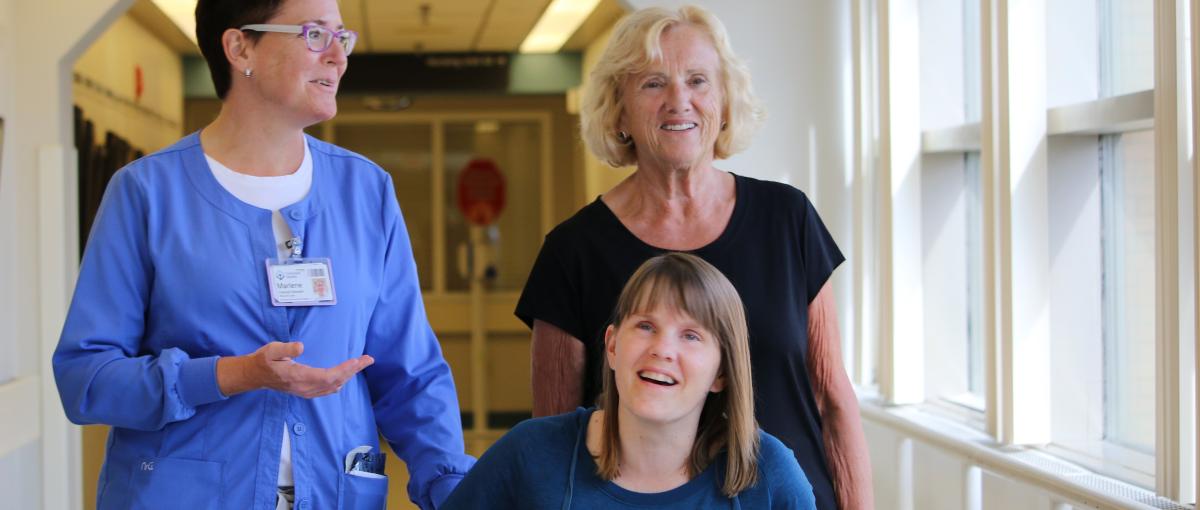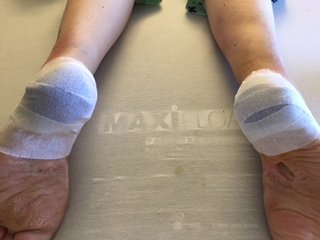Whole-hearted care saves patient's feet and quality of life

August 24, 2016
By Megan Perras, Freelance writer
Six months ago, Kirstin Hubert’s feet were at risk of amputation.
Kirstin suffers from neuropathy due to diabetes, and has no feeling in her feet. In 2006, she burned them when she accidentally immersed them in scalding water.
“I looked down and thought, 'I don’t remember having bandages on my feet,' and then I realized it was my skin,” says Kirstin.

Kirstin had deep foot wounds due to complications with her diabetes.
Thus began 10 years of infections, skin graft surgeries, home care, visits to a diabetic foot care clinic, and attempted healing—sometimes successful, sometimes not. In 2013, a pressure injury formed on her left foot, followed by one on her right.
Because Kirstin was not adequately resting her feet, her wounds had never fully healed. By March 2016, they were so serious she had to be admitted to the Grey Nuns Hospital.
Marlene Varga, Clinical Nurse Specialist, Skin and Wound Care, first saw Kirstin walking to get some toast. “I thought, 'Wasn’t I just told she was a doozy of a case? Why is she walking?'” says Marlene. She met Kirstin and soon began her on a consistent treatment plan that involved not only her wounds, but her heart as well.
“People have this perception that we just put the dressing on the patient. The first thing I want to do is get to know the person. Healing is emotional, and if we’re here to help people, we have to do it both ways,” says Marlene, who began visiting Kirstin each day.
She took time to explain to Kirstin how her wounds were changing, and advocated for the right care. She built Kirstin’s trust and took time to learn what was halting her healing—Kirstin wanted a sense of normalcy for her husband and two children, and being in the hospital made that a challenge.
“We found ways to incorporate life into the day,” says Marlene. She helped ease Kirstin’s anxiety by bringing activities for her children to do in the hospital, making them comfortable in the clinical setting. Kirstin’s family agreed that she should take however long she needed to heal completely.
Five months after being admitted, Kirstin now has the normalcy she was craving. She is back at home, using a wheelchair to continue to rest her feet. She takes her children to swimming lessons daily, and is now healthy enough to be considered for a pancreas transplant.
According to the Canadian Diabetes Association, an estimated 6.4 million Canadians will be diagnosed with diabetes by the year 2025. Fifteen to 25 per cent of those people will be affected by foot ulceration. One-third of foot amputations in 2011 to 2012 were performed on people reporting diabetic foot wounds.